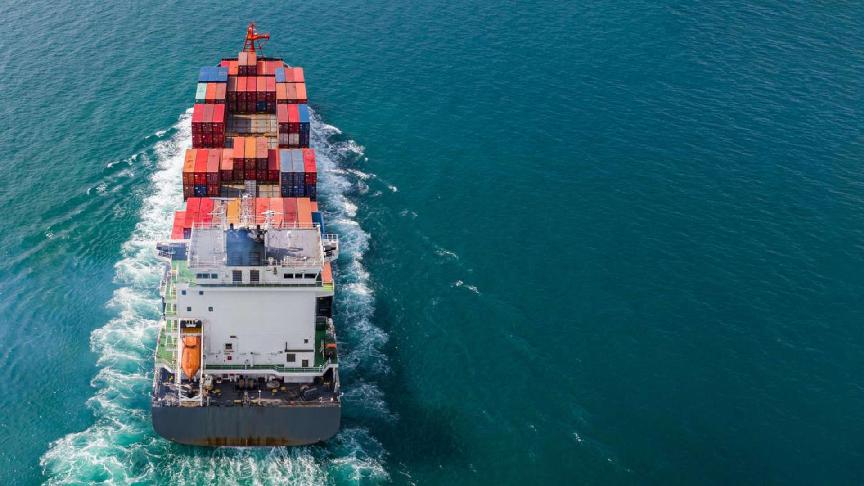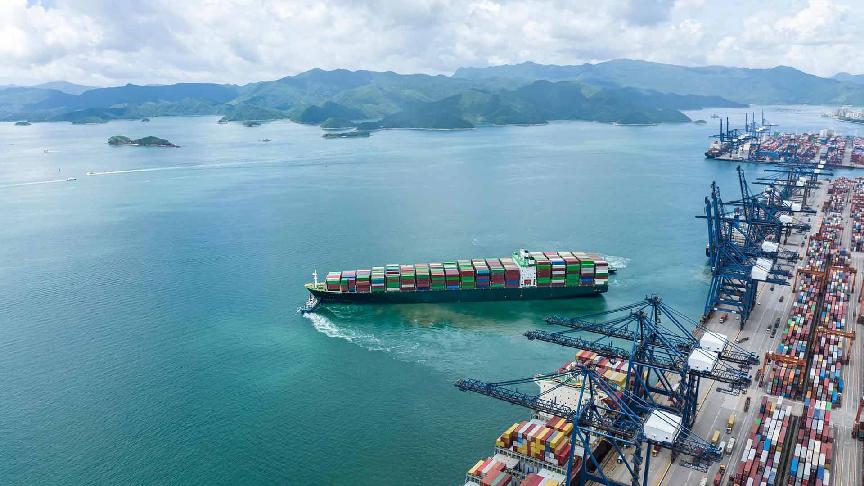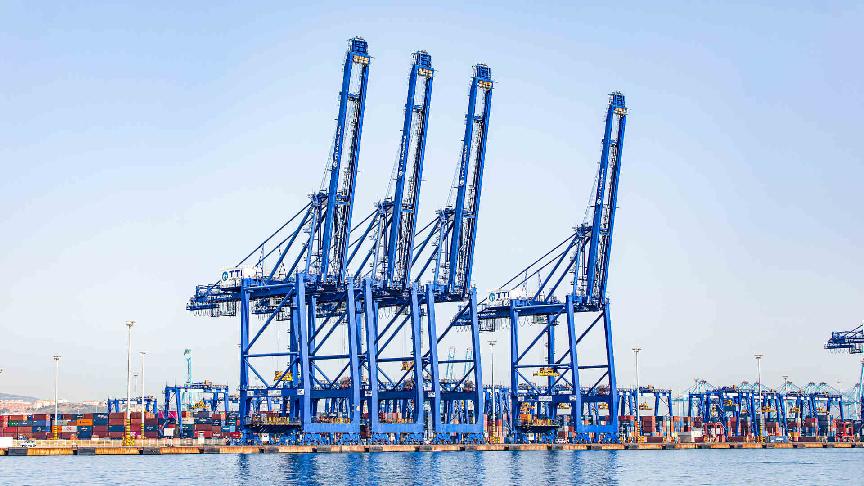3 October 2024 (Lloyd's List) - FOR Europe and the Mediterranean’s port majors, alliance calls on mainline routes from Asia are a big deal. Securing direct calls on this trunk trade means big business and big volumes to boot.
From February next year, nine of the 10 largest lines will realign alliances once more on the east-west trades. Ocean Alliance (CMA CGM, Cosco and Evergreen) will remain, the former The Alliance members — Ocean Network Express, HMM and Yang Ming — will continue as the Premier Alliance, minus Hapag-Lloyd, which will link up with European counterpart Maersk under the Gemini Cooperation, while Mediterranean Shipping Company, upon the dissolution of 2M, will go it alone.
The consequence of container shipping’s latest alliance merry-go-round is an overhaul of the Asia-Europe network, in what is the largest shake-up of port rotations on the trade in many years.
For some ports in Europe and the wider Mediterranean region this means a sizeable increase in volumes upon upping their alliance call tally, while others will be counting the cost of alliance absences or, as in some instances, reflecting on missing out on lucrative loops altogether when revamped services are launched from next year.
This analysis assesses the impending Asia-Europe services to be rolled out next year, using Cape of Good Hope routings, where applicable, given this is the more likely scenario of the dual network offerings revealed by carriers in light of yet another spate of attacks in the Red Sea over the past week.
The big winner in northern Europe is Hamburg. The German port will boast no less than seven extra direct alliance calls from next year, doubling its current count in a significant coup for the giant of Helgoland Bay.
Its regional rivals, meanwhile, Rotterdam and Antwerp will also gain five port calls apiece from the revamped network.
Europe’s largest port, Rotterdam, will continue to lay claim to having the most calls with as many as 17, up from 12 on existing networks, while Hamburg (14) will leapfrog Antwerp (13) as the second-most prevalent port on alliance rotations.
Other significant gains on the Asia-northern Europe leg can be seen in Felixstowe, Le Havre, both with four fresh port calls, and in Bremerhaven and London Gateway, which see two additional weekly alliance services. Portugal’s Sines and Klaipeda in Lithuania receive an extra call, as does Gdansk, which is joined by compatriot Gdynia as the Polish port makes its debut on the trunk trade list.
On the Asia-Mediterranean trade the Greek port of Piraeus and Spain’s Valencia come out trumps, adding four new alliance calls each. Damietta more than doubles its alliance quota with a further three calls from next year, while there is two extra calls for Malaga, Marseille-Fos and Yarimca.
Piraeus takes the crown from Tanger Med, having lost a three calls, as the most popular Asia-Mediterranean destination from next year.
The immediate pattern that emerges from next year’s networks, while not a new trend, is that carriers are increasingly looking to drive volumes through affiliated terminals, or those with a financial interest whether through full ownership or an equity stake.
Take Hamburg on the Asia-northern Europe route, for example. MSC is on the verge of signing off on its long-mooted a stake in its largest terminal operator Hamburger Hafen und Logistik (HHLA). Unsurprisingly, Hamburg features prominently on its standalone rotations from next year.
Similarly, Le Havre, where MSC owns two terminals outright through its port arm Terminal Investment Ltd (TIL), will also be used for a core component of its box operations in northern Europe. MSC is also responsible for Klaipeda’s sole alliance offering, which is home to the Geneva based group’s Smelte Container Terminal.
Indeed, as is the case for the Premier Alliance’s east-west trade offering to customers and the Ocean Alliance and Gemini there is a clear link between chosen stopovers and terminal interests.
Unlike MSC, however, having alliance partners with interests in rival facilities would require certain terminal trade-offs to satisfy all parties.
On Gemini’s Asia-Northern Europe offering for example, there are port calls in Wilhelmshaven and Hamburg, where Hapag-Lloyd has equity stakes, but also Bremerhaven and Rotterdam in which alliance partner Maersk has a financial interest.
On the pair’s Asia-Mediterranean loops, Port Said is utilised as a hub in the east of the region given Maersk’s affiliation through its significant stake at the Suez Canal Container Terminal at the port, and so too is Tanger Med. Both Maersk and Hapag-Lloyd have respective interests in the Moroccan port.
For the Ocean Alliance, port rotations are again split in accordance with carrier affiliation. French line CMA CGM has interests in the home ports of Le Havre and Dunkirk, Cosco in Antwerp, Zeebrugge and Hamburg, and Evergreen in Rotterdam and Abu Qir, representing its sole terminal interests in Northern Europe and the Mediterranean respectively. All feature as part of the alliance’s joint port portfolio on the trade to varying degrees, yet certain exchanges would have been made between the trio of lines that ensured their respective terminal interests were utilised.
Commenting on the relation between port calls and carrier’s terminal affiliation, Dynamar analyst Darron Wadey noted how it would be strange if lines did not support its investment by patronising other facilities.
“In essence, carriers and their associated groupings invest in ports and terminals for one or more of the following reasons; as a pure investment, to secure berthing space at the port, or as part, increasingly, of an integrated logistics offering,” Wadey told Lloyd’s List.
Nevertheless, in the first instance the port has to attract cargoes, he added.
“By and large, the choice of gateway port will be decided by the ultimate origin/destination of the cargoes concerned, plus shipper/consignee preferences” Wadey said.
“In that regard, carriers have less flexibility in deciding gateways excepting port clusters where individual ports offer similar benefits to each other. In these instances, carriers may be able to exercise greater discretion in deciding the port.”
However, Wadey was clear in that having an equity interest in a terminal located in a gateway port still has the added benefit of access to berthing windows and integrated offering requirements.
It is therefore no coincidence that all of Gemini’s hub ports feature terminals where Hapag-Lloyd or Maersk has a stake, he said.
On the flipside, those ports that are not linked to a certain carrier or operate independently could find themselves at a disadvantage when service strings are selected.
Wadey said that there such operators may well have reason to be concerned from those carriers with well-defined own terminal arms.
Looking ahead to next year’s revised loops, it is Southampton, which is owned and run by independent operator DP World, that has seen two alliance calls cut on the Asia-northern Europe leg and Wilhelmshaven, in which Hapag-Lloyd only has a small stake, that has a deficit of three.
Meanwhile, on the Asia-Mediterranean trade, in addition to Tanger Med’s trio, Türkiye's Aliaga loses its two alliance calls previously under 2M, as Maersk utilises other regional hubs under its new Gemini schedule. Barcelona and Trieste also lose a call a piece as part of next year’s shake-up.
This analysis of the Asia-Europe networks is based on a comparison of alliance services scheduled for October 2024 against those announced by MSC, Premier Alliance and the Gemini Cooperation for 2025 (Cape of Good Hope routing). The Ocean Alliance network for 2025 is based on its current service schedule in October 2024, according to MDS Transmodal’s Containership Databank







